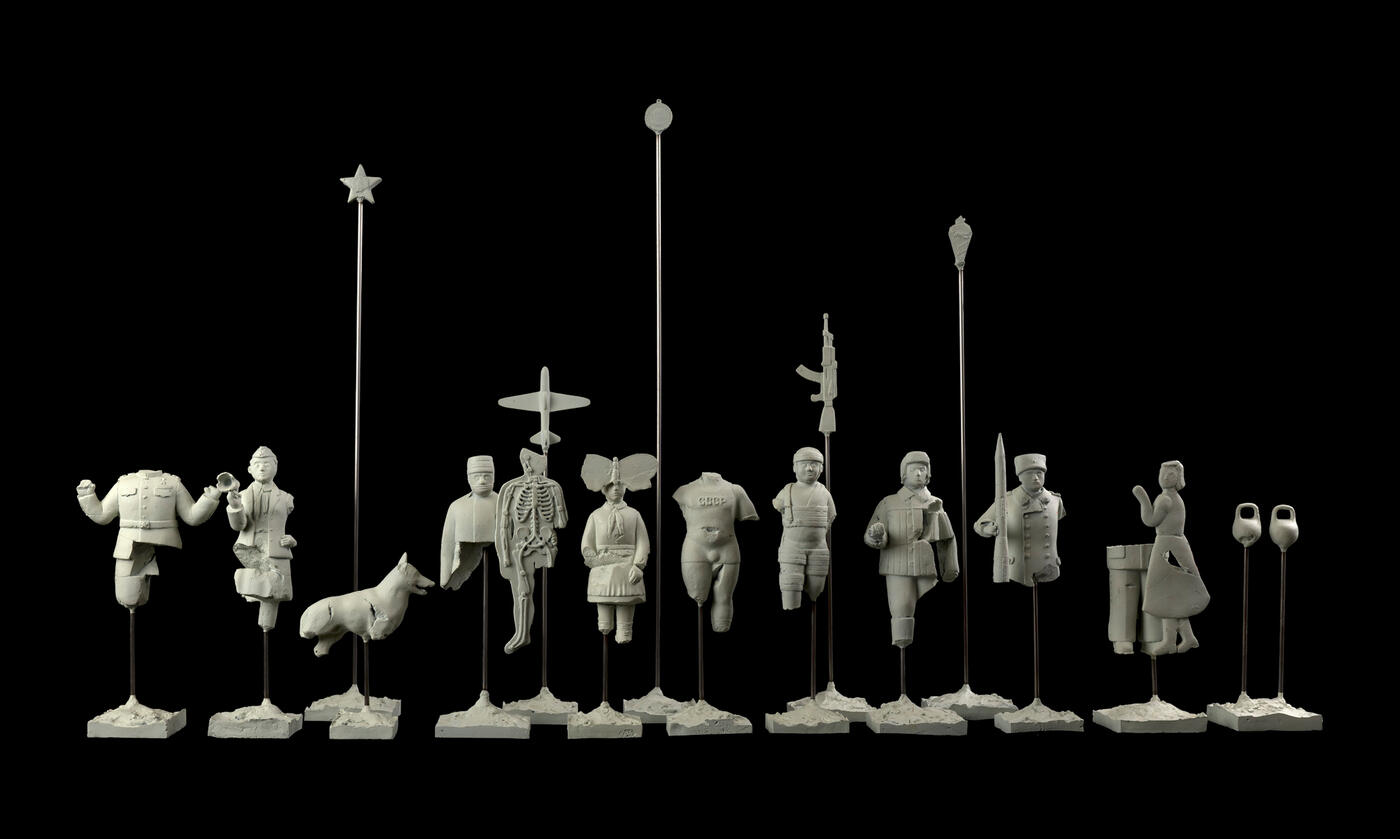29 November 2017 Russian Art Auctions
29 November 2017

235. BRUSKIN, GRISHA (B. 1945)
Modern Archaeology, a collection of 16 sculptures, each signed, one inscribed “A.P.” and 15 numbered “3/3” on the base, also further each variously numbered on the underside of the base.
Each painted bronze, the tallest measuring 71 cm (height) and the shortest 19.5 cm (height).
15 sculptures are No. 3 from the limited edition of three, and one is the artist’s proof.
50,000-70,000 GBP
Provenance: Acquired directly from the artist by the present owner in New York in 2005.
Important private collection, Europe.
Related literature: For another version of the collection, see Grisha Bruskin. Modern Archaeology, New York, Marlborough Gallery, 2004.
Grisha Bruskin. Archaeologist’s Collection, Bielefeld, Kerber Art, 2013, pp. 67–73, illustrated.
The collection of sculptures presented for auction belongs to the Modern Archaeology cycle, which marked a milestone in Grisha Bruskin’s work and heralded the birth of the plastic idea that was further developed in his famous Twilight of the Gods (2009) and Archaeologist’s Collection (2013) projects.
The dominant theme of Modern Archaeology is the social mythology of the Soviet period. The sculptor creates a kind of archaeological museum that displays various archetypes, for example the Pioneer, the Doctor, the Military Man and the Athlete, as well as material symbols of the age, such as the Kalashnikov Assault Rifle or the soaring Aircraft.
These little figurines are unique in that the viewer instantly recognises typical representatives of the Soviet era. These realia of the recent past are portrayed as being fragmentary, thus emphasising their link with ancient statues. Bruskin compresses time boldly, without waiting for hundreds of years to transform his works. Although outwardly fragile, they are all cast in bronze – a material that takes on a symbolic meaning in these sculptures: the past recedes and declines, yet forms the solid basis of consciousness and memory.
Since it constitutes an allegory of the USSR’s value system, the series of works signals the “fall” of the Third Rome, the latest superpower. Bruskin was an eyewitness of the latter period of socialism and watched all the stages of its “extinction”. Paradoxically, though, by depicting a defunct stratum of time, Bruskin prevents it from being consigned to oblivion. He speaks of the past, using classical artistic resources, and moves the past into the present. Consequently, what was once history returns today as an artistic event, a live art performance.
Notes on symbols:
* Indicates 5% Import Duty Charge applies.
Ω Indicates 20% Import Duty Charge applies.
§ Indicates Artist's Resale Right applies.
† Indicates Standard VAT scheme applies, and the rate of 20% VAT will be charged on both hammer price and premium.